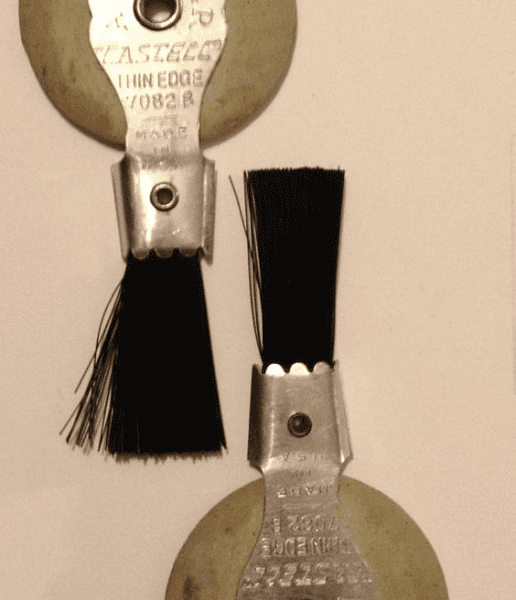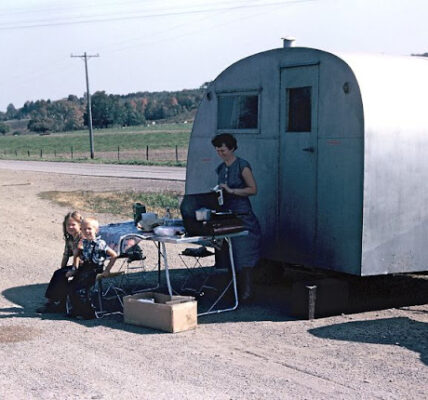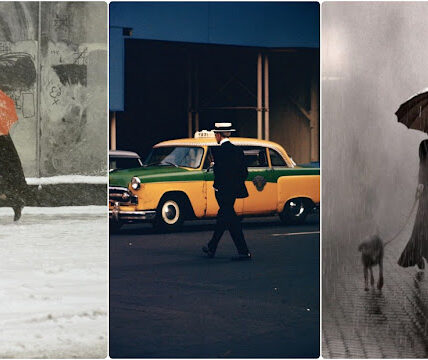In a world dominated by laptops and smartphones, it’s easy to forget the tools that once played a pivotal role in the writing and office environments of yesteryear. Among those tools, typewriter eraser brushes stand out as a symbol of an era when making a mistake on a typed document was a much bigger deal than simply hitting the backspace key. These small, circular objects with attached brushes were essential for maintaining the neatness of a typed page. Let’s take a look at what these tools were, why they mattered, and how they’ve become relics of the past.
What Are Typewriter Eraser Brushes?

At first glance, a typewriter eraser brush might seem like a curious object to those unfamiliar with typewriters. These small, round erasers were made of soft rubber infused with fine abrasives. The purpose? To carefully remove mistakes from the paper without tearing it, allowing for corrections to be made on typewritten documents.
The attached brush served an equally important function. Once a mistake was erased, the fine debris left behind from the eraser needed to be gently swept away to avoid smudging or damaging the paper. This brush, soft and delicate, ensured that the corrected document looked as pristine as possible.
In an era where typing errors could be time-consuming and cumbersome to fix, typewriter eraser brushes were essential for ensuring that a single mistake didn’t ruin an entire page or document.
A Snapshot in Time: When Eraser Brushes Were Essential
Imagine a time when typists relied solely on manual or electric typewriters for business, literature, or personal correspondence. In the early to mid-20th century, typewriter eraser brushes were as common as white-out or the delete key is today. No typist could afford to be without one because even the most skilled typists occasionally made mistakes.
At that time, carbon paper was frequently used to make multiple copies of a document. A single mistake meant that typists had to correct not only the original sheet but also the carbon copies underneath. The eraser brush allowed for precise corrections without damaging the delicate layers of carbon paper, making it an indispensable tool for office workers, writers, and anyone else using a typewriter.
Correcting errors on a typewriter was an art in itself. Unlike modern word processors, which allow for endless editing, typewriters left no room for easy fixes. A misplaced letter or misspelled word required finesse, patience, and the right tools. Typewriter eraser brushes were that essential tool, allowing typists to maintain a professional appearance on every page.
The Decline of the Typewriter Era

As technology progressed, the reign of the typewriter began to wane. The invention of word processors and eventually personal computers revolutionized the way people wrote and edited documents. Digital text offered the convenience of instantaneous editing—mistakes could be fixed with a simple backspace or delete key. With this shift, the need for physical correction tools like typewriter eraser brushes quickly faded away.
By the 1980s and 1990s, typewriters were being phased out of offices and replaced with computers. The once-essential typewriter eraser brush became a rare relic, a nostalgic reminder of a time when typing required precision and care. For those who spent hours at a typewriter, the memories of carefully erasing errors and brushing away debris remain vivid, evoking a sense of how far technology has come.
The Art of Typing: A Lost Skill

Typing on a typewriter was more than just a task—it was a skill. The rhythmic clacking of the keys, the pressure needed to press each one, and the care taken to ensure every letter was correctly placed on the page made typing both a physical and mental challenge. There was no room for careless errors, and when mistakes did happen, tools like the typewriter eraser brush were there to save the day.
In today’s world, typing is an almost effortless action performed on smooth, responsive keyboards with autocorrect features and undo buttons. The precision and patience that typists once needed have largely been replaced by convenience and speed. As a result, typewriter eraser brushes now serve as a reminder of the lost art of typing—a time when each word on a page carried a little more weight because of the effort required to produce it.
Typewriter Eraser Brushes: A Niche Collectible
While the typewriter era may have come to an end, the tools from that time have found a new life as collectibles. Vintage enthusiasts, retro office supply lovers, and typewriter collectors seek out typewriter eraser brushes as a way to connect with the past. These tools, once ubiquitous in offices around the world, now hold sentimental value for those who appreciate the craftsmanship and history behind them.

For some, typewriter eraser brushes are a reminder of simpler times, when technology didn’t dominate every aspect of life. For others, they represent an appreciation for the ingenuity of past generations, who relied on practical tools to solve everyday problems in creative ways.
The rise of digital technology has rendered many tools of the past obsolete, and typewriter eraser brushes are no exception. What was once an essential item on every typist’s desk is now a relic of a bygone era. For those who remember using these tools, they evoke memories of the rhythmic sound of typewriters, the smell of ink ribbons, and the meticulous care taken with every document.
Though we no longer need these brushes in our modern world, they remain a fascinating piece of history—evidence of how much the world of writing and editing has evolved. Today, as we rely on digital conveniences, it’s worth remembering the tools and skills that once made typing an art. Typewriter eraser brushes may no longer be essential, but their place in history will never be forgotten.


